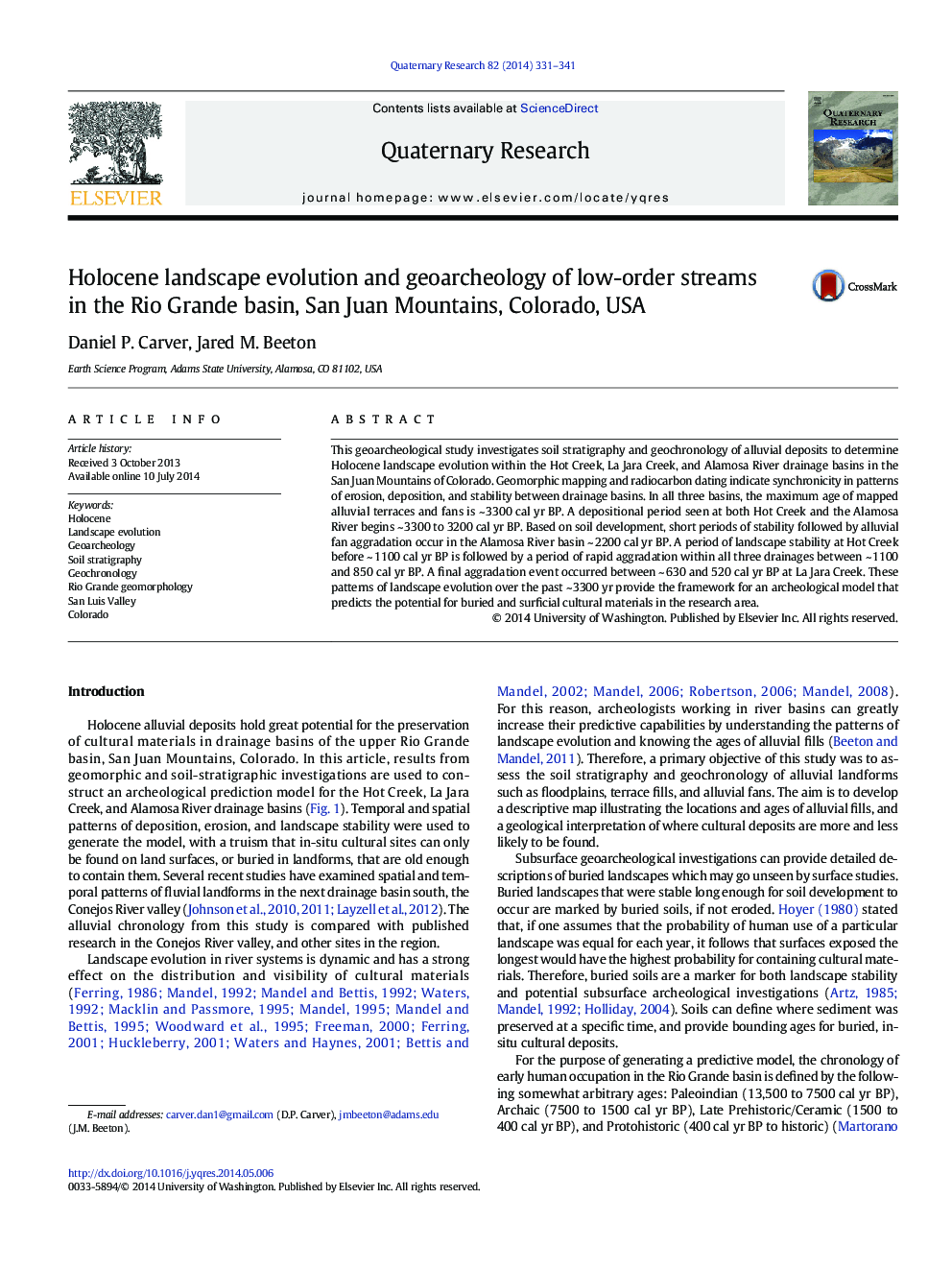| Article ID | Journal | Published Year | Pages | File Type |
|---|---|---|---|---|
| 1045227 | Quaternary Research | 2014 | 11 Pages |
This geoarcheological study investigates soil stratigraphy and geochronology of alluvial deposits to determine Holocene landscape evolution within the Hot Creek, La Jara Creek, and Alamosa River drainage basins in the San Juan Mountains of Colorado. Geomorphic mapping and radiocarbon dating indicate synchronicity in patterns of erosion, deposition, and stability between drainage basins. In all three basins, the maximum age of mapped alluvial terraces and fans is ~ 3300 cal yr BP. A depositional period seen at both Hot Creek and the Alamosa River begins ~ 3300 to 3200 cal yr BP. Based on soil development, short periods of stability followed by alluvial fan aggradation occur in the Alamosa River basin ~ 2200 cal yr BP. A period of landscape stability at Hot Creek before ~ 1100 cal yr BP is followed by a period of rapid aggradation within all three drainages between ~ 1100 and 850 cal yr BP. A final aggradation event occurred between ~ 630 and 520 cal yr BP at La Jara Creek. These patterns of landscape evolution over the past ~ 3300 yr provide the framework for an archeological model that predicts the potential for buried and surficial cultural materials in the research area.
